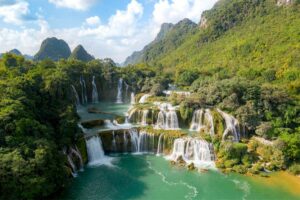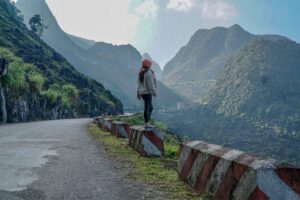Cao Bang Province is a treasure trove of natural wonders, and its waterfalls are among the most captivating sights to explore. From the famous Ban Gioc Waterfall to lesser-known gems hidden deep within lush valleys, the waterfalls of Cao Bang offer a unique blend of stunning landscapes, cultural richness, and serene beauty. Whether you are seeking the dramatic power of water cascading down towering cliffs or a peaceful retreat in a secluded valley, Cao Bang’s waterfalls provide an unforgettable experience.
Best time to visit the waterfalls in Cao Bang
The best time to visit the waterfalls in Cao Bang is during the rainy season, which typically spans from May to September. This is when the waterfalls are at their most powerful and vibrant, as the increased water flow creates spectacular displays of nature’s force. However, the rainy season also comes with its challenges, such as muddy roads and the possibility of heavy rains, which can make travel more difficult.
For those looking for a balance between good weather and impressive waterfall views, the months immediately following the rainy season, from October to November, are ideal. During this period, the waterfalls still have a strong flow, but the rain has subsided, making it easier to explore the area. The water also tends to be clearer and more picturesque.
In contrast, the dry season, from December to April, is not the best time to visit the waterfalls. Many of them, including the famous Ban Gioc Waterfall, can be reduced to a mere trickle or even dry out completely during the driest months. While the dry season offers more comfortable weather for traveling, the waterfalls lose much of their grandeur, making it less appealing for waterfall enthusiasts.

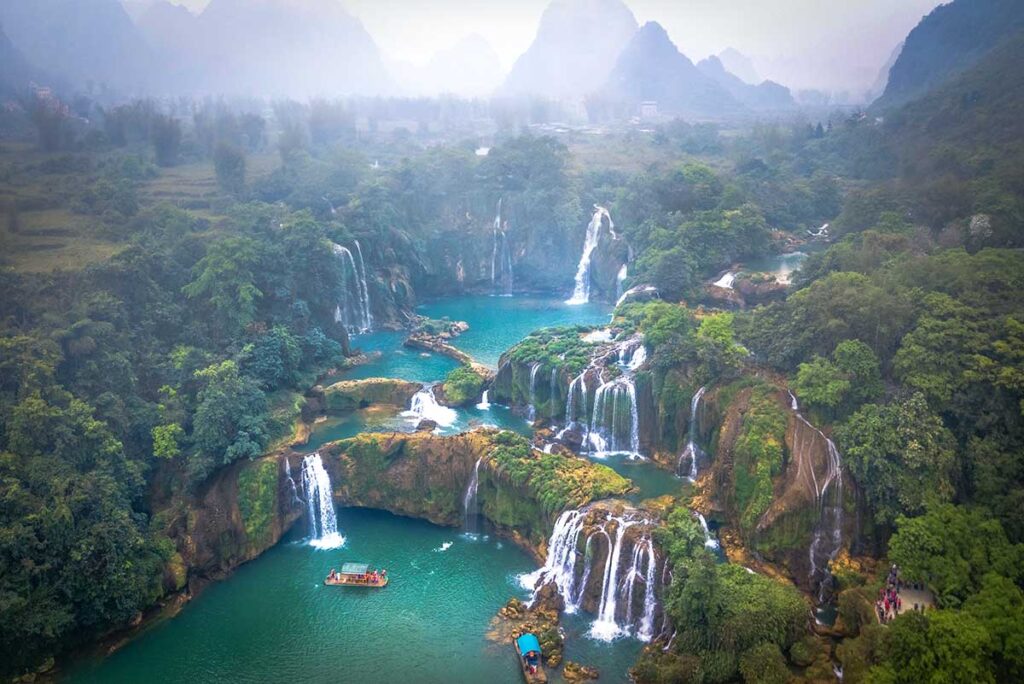
1. Ban Gioc Waterfall
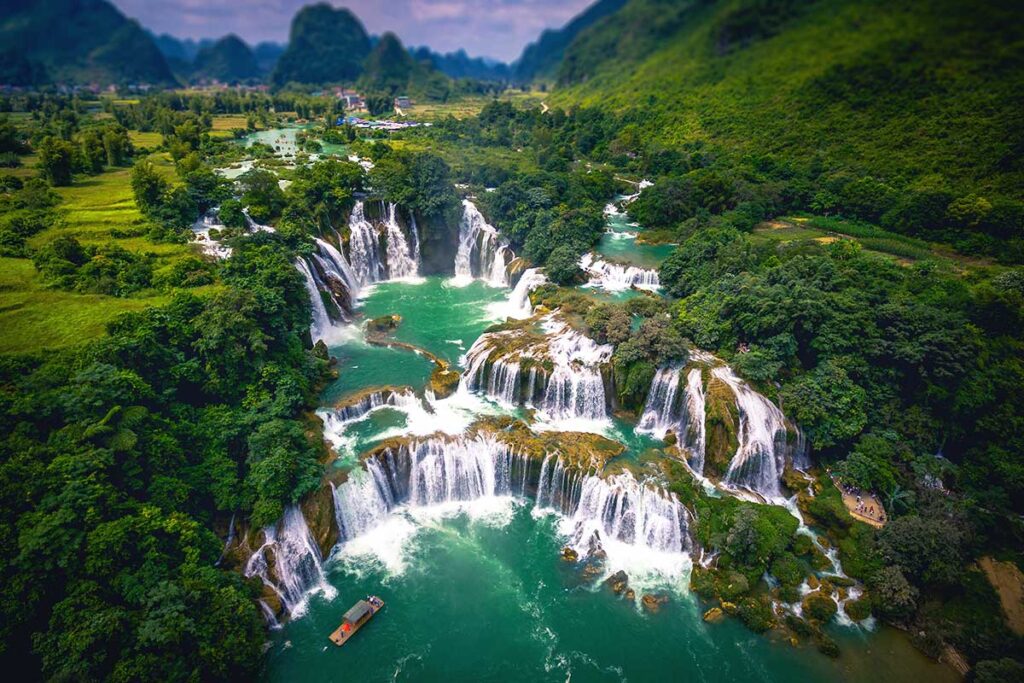
There is no surprise that Ban Gioc Waterfall tops the list. Located on the border between Vietnam and China, Ban Gioc is the largest and most famous waterfall in Vietnam. The waterfall spans over 300 meters in width and drops 30 meters into the Quay Son River, creating a breathtaking scene of cascading water and mist. Surrounded by karst mountains and lush greenery, Ban Gioc is a natural wonder that draws visitors from all over the world.
The best time to visit Ban Gioc Waterfall is during the rainy season when the waterfall is at its most powerful. However, it remains a stunning sight throughout the year, with its multi-tiered cascades and the tranquil river below. You can take a boat ride to get closer to the falls or explore the surrounding area, which includes a Buddhist temple and the nearby Nguom Ngao Cave.
2. Nam Tra Waterfall

Compared to the grandeur of Ban Gioc, Nam Tra Waterfall is more modest in scale but offers a unique charm. This small waterfall is nestled in a picturesque valley surrounded by rice fields, towering mountains, and traditional ethnic villages. The true allure of Nam Tra lies not in the height or size of the falls but in the serene and scenic landscape that surrounds it. The valley is also home to the famous Angel Eye Mountain, a natural wonder worth exploring, as well as the Thang Hen Lake, just 2 km away.
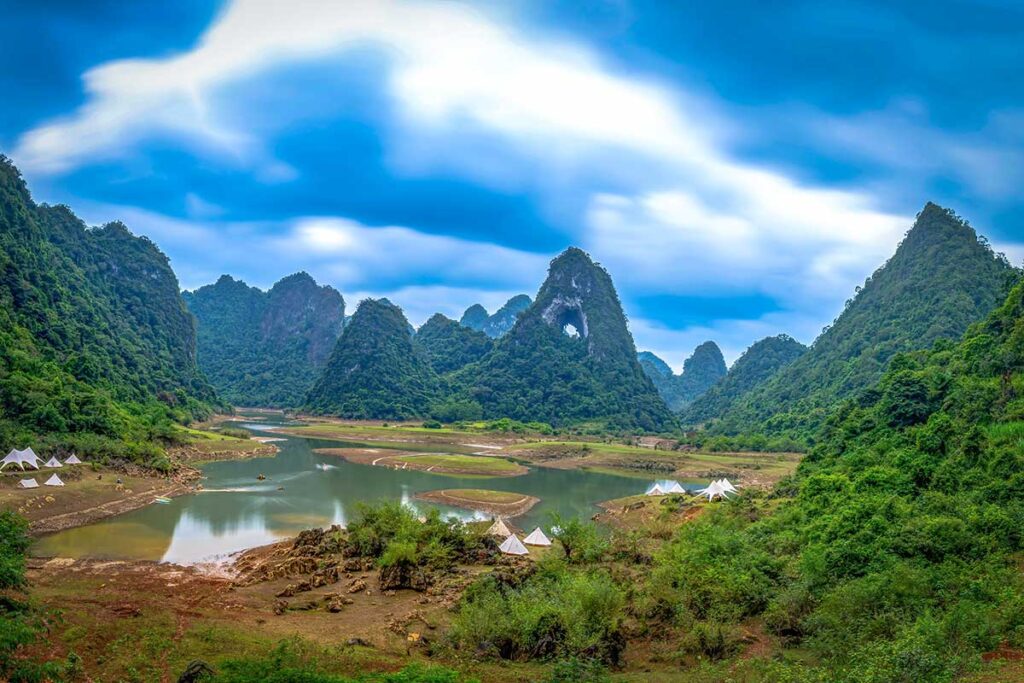
Nam Tra Waterfall is located about 30 km from Cao Bang City, making it an easy day trip for those staying in the area. The drive to the valley offers stunning views and a peaceful atmosphere, making it a perfect escape from the bustling city life. While the waterfall itself may not be the main attraction, the journey and the surrounding beauty make it a must-visit spot.
3. Quang Trung Waterfall
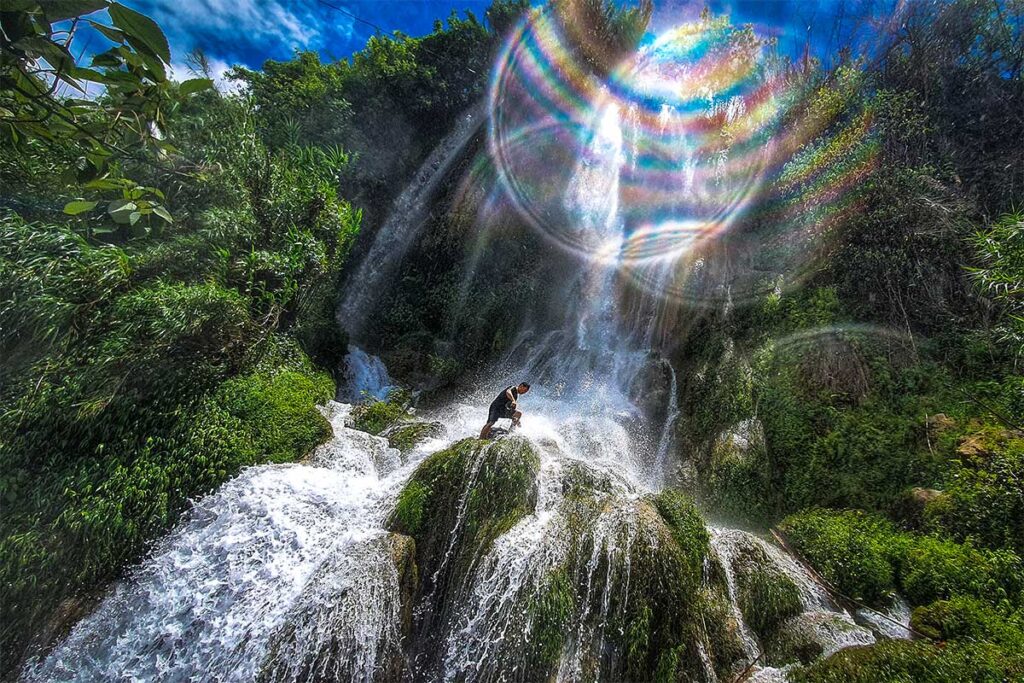
Quang Trung Waterfall is a hidden gem located just 20 minutes by motorbike from Cao Bang City. The waterfall cascades from a high cliff, surrounded by jungle on both sides, and forms a small natural pool at its base. Although it is not a major tourist attraction, Quang Trung is a perfect spot to cool off on a hot day, shower under the falls, or take a refreshing dip in the pool below. Due to its proximity to the city, it is a convenient stop at the end of a Cao Bang adventure, especially before heading back to Hanoi.
Be aware that during the dry season, the waterfall may almost dry out, so it’s best to visit after some rainfall to ensure a more impressive sight. Despite its smaller scale, the peaceful setting and the chance to have the place to yourself make Quang Trung Waterfall a delightful addition to any Cao Bang itinerary.
4. Thoong Dao Waterfall

Thoong Dao Waterfall may not be the most imposing waterfall in Cao Bang, but its location in the breathtaking Phong Nam Valley makes it a worthwhile visit. The waterfall is part of a stream that meanders through one of the most beautiful and remote valleys in Vietnam, close to the Chinese border. The journey to Thoong Dao offers some of the most scenic views in the region, with towering jungle-clad mountains, vast rice fields, and small ethnic villages that give you a glimpse of traditional rural life.
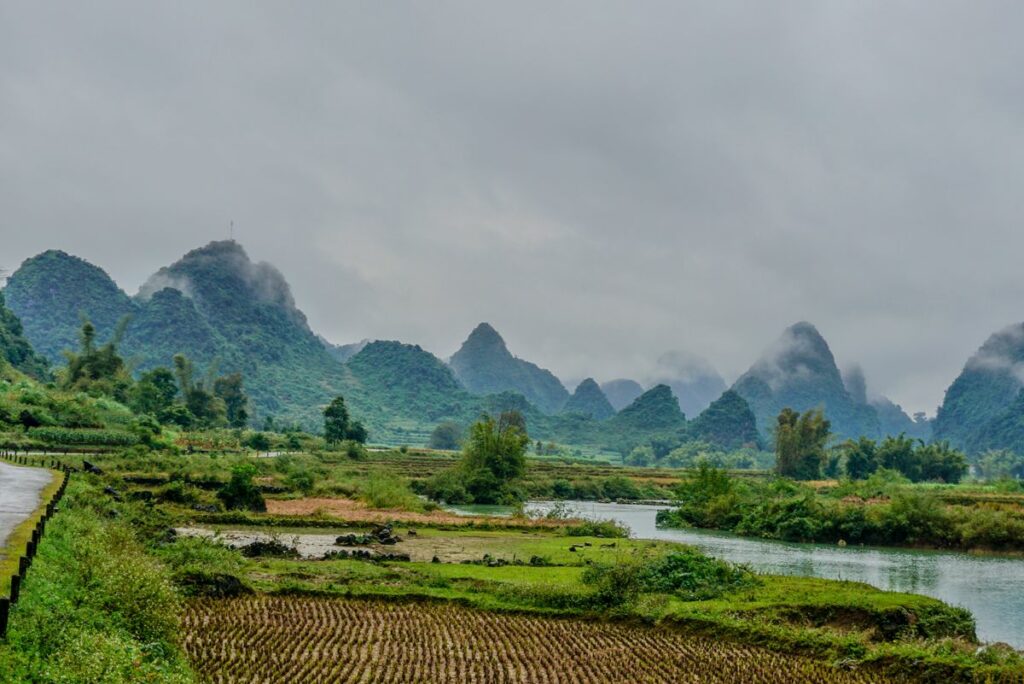
While the waterfall itself is modest, the experience of traveling through the Phong Nam Valley is unforgettable. It’s the perfect place for those seeking solitude and the beauty of untouched nature. The road to the waterfall can be challenging, but the reward is well worth the effort.
5. Co La Waterfall
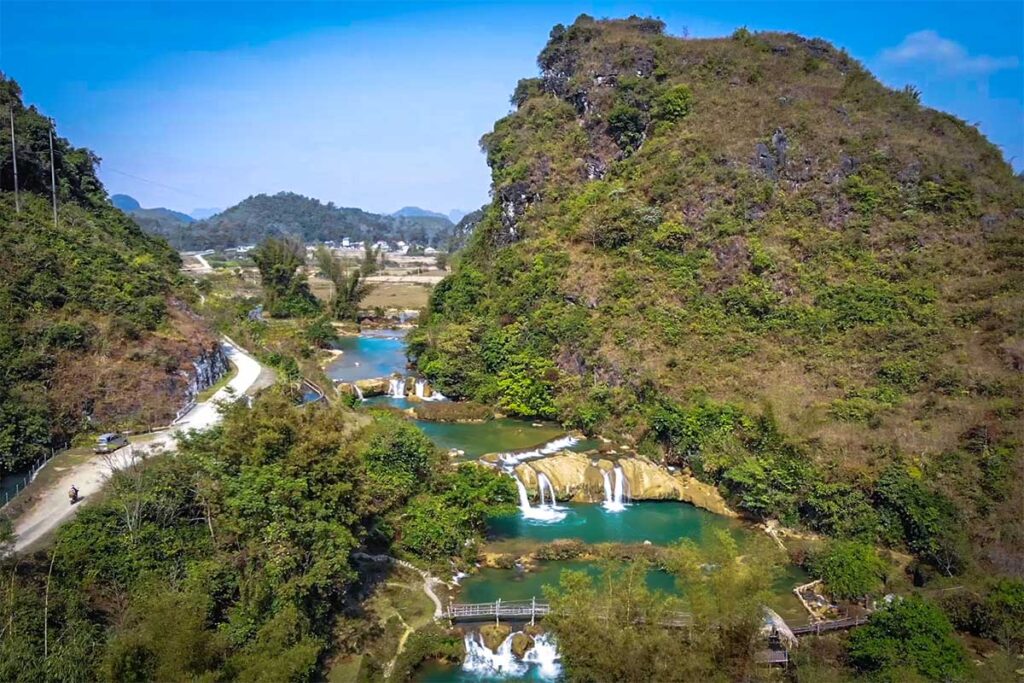
Located in the same area as Thoong Dao Waterfall, Co La Waterfall is another hidden gem in the remote parts of Cao Bang. Formed by the Quay Son River as it flows along its course and encounters the Thoong Long Mountain, Co La Waterfall stands about 20 meters high and forms three tiers. Each tier is separated by large pools of emerald green water, inviting you to explore the rocky cliffs and immerse yourself in the natural beauty of the site.
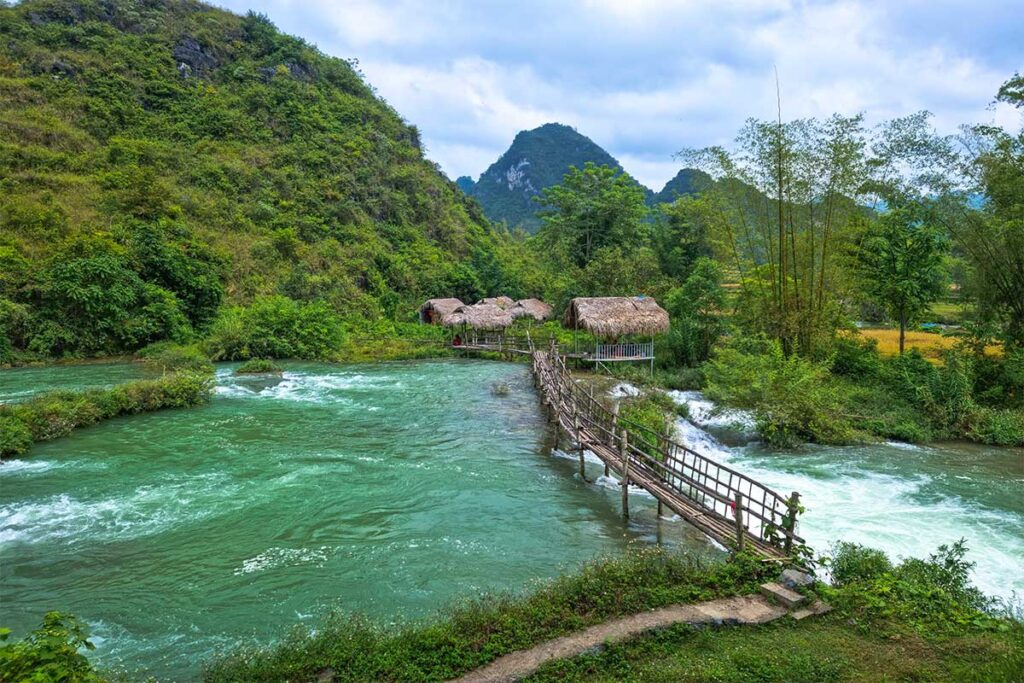
Like Thoong Dao, Co La Waterfall is surrounded by stunning scenery, making the journey as much of a highlight as the destination itself. This waterfall is best visited during the rainy season when the water flow is strongest and the surrounding landscape is at its most vibrant. For those looking to escape the crowds and experience the raw beauty of Cao Bang, Co La Waterfall is an excellent choice.
